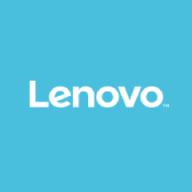

Microsoft Intune and Lenovo Device Manager focus on device management for enterprises, with Microsoft Intune showing a pricing and support advantage, whereas Lenovo Device Manager offers a rich feature set.
Features: Microsoft Intune provides comprehensive integration with Microsoft's ecosystem, mobile device management, application management, and security solutions. Lenovo Device Manager excels in asset management, automated updates, and detailed device health monitoring, highlighting its strength in hardware management.
Ease of Deployment and Customer Service: Microsoft Intune benefits from seamless integration with Windows systems, easier deployment, and extensive documentation support. Lenovo Device Manager requires more initial setup to align with its broad hardware compatibility, though it maintains solid customer service.
Pricing and ROI: Microsoft Intune offers competitive pricing, often bundled with other Microsoft services, providing an attractive ROI for businesses invested in Microsoft technology. Lenovo Device Manager involves higher initial setup costs but offers valuable returns for environments prioritizing hardware management.
| Product | Market Share (%) |
|---|---|
| Microsoft Intune | 31.3% |
| Lenovo Device Manager | 0.8% |
| Other | 67.9% |

| Company Size | Count |
|---|---|
| Small Business | 116 |
| Midsize Enterprise | 46 |
| Large Enterprise | 152 |
Lenovo Device Manager provides advanced device management for complex IT environments, ensuring efficient monitoring and control of hardware assets.
Lenovo Device Manager is designed for IT professionals who need comprehensive insights and management of their hardware portfolio. It supports various Lenovo devices, offering real-time status updates, remote configuration, software updates, and performance monitoring, improving operational efficiency.
What are the key features of Lenovo Device Manager?Lenovo Device Manager is implemented across various industries where efficient device management is critical. In healthcare, it ensures medical devices operate smoothly, reducing downtime. In manufacturing, it helps monitor production equipment, preventing failures and boosting productivity. Education sectors use it to maintain computer labs efficiently, ensuring students have reliable technology.
Microsoft Intune provides centralized management of mobile devices and applications, ensuring security, compliance, and productivity through integration with Microsoft services like Microsoft 365 and Azure Active Directory.
Organizations use Intune for managing mobile devices and applications, enhancing security and compliance across platforms. With features like single sign-on, conditional access, and zero-touch deployment via Autopilot, it facilitates efficient operations. Intune's scalability, easy enrollment, and capabilities such as remote wipe support diverse device management, offering robust data protection and efficient operation. Despite its features, improvement areas include reporting, compatibility with non-Microsoft devices, and better support for macOS and Linux devices.
What are the key features of Microsoft Intune?
What benefits should users look for in reviews?
In industries such as finance, healthcare, and education, Microsoft Intune is implemented to ensure secure and compliant device management. Companies leverage its capabilities to deploy security policies and manage both corporate-owned and BYOD environments, facilitating a unified approach to data protection and compliance.
We monitor all Enterprise Mobility Management (EMM) reviews to prevent fraudulent reviews and keep review quality high. We do not post reviews by company employees or direct competitors. We validate each review for authenticity via cross-reference with LinkedIn, and personal follow-up with the reviewer when necessary.